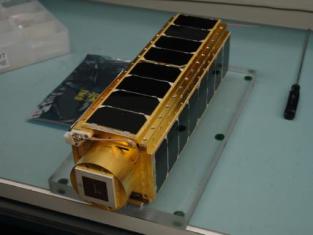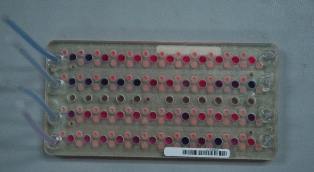NASA to develop microfluidics technology for space-based research with Raydiance
28 January 2010
Raydiance Corporation, developer of the world’s first commercial-grade ultrafast laser, is partnering with the Small Spacecraft Division in the Engineering Directorate at NASA's Ames Research Center to develop advanced microfluidics devices for space-based biological experiments.
“The capability to athermally ablate very precise features in transparent polymers and glasses, in addition to ceramics, will enable NASA Ames to rapidly fabricate complex and integrated components on a single microfluidics card. This collaborative work will have large implications for both the research and commercial worlds.”
Under the terms of a cooperative agreement funded by the Advanced Capabilities Division in NASA's Exploration Systems Mission Directorate to support a Seed Fund project within NASA’s Innovative Partnerships Program, NASA Ames' experts in fluidic design will employ Raydiance’s Smart Light ultrafast laser platform to fabricate next-generation microfluidics devices and components.
These will be deployed on free-flying nanosatellites, the International Space Station, and future lunar and planetary research laboratories. Results from this work will advance capabilities for molecular and cellular diagnostics, enable rapid drug discovery and screening, and expand the understanding of the effects of the space environment on biological systems.
“This partnership brings together the powerful and versatile Smart Light ultrafast technology with the world-class microfluidics expertise of the NASA Ames' small spacecraft group,” said Barry Schuler, Chairman and CEO of Raydiance. “The capability to athermally ablate very precise features in transparent polymers and glasses, in addition to ceramics, will enable NASA Ames to rapidly fabricate complex and integrated components on a single microfluidics card. This collaborative work will have large implications for both the research and commercial worlds.”
The work at NASA Ames is led by Dr. Antonio J. Ricco, chief technologist at the Small Satellite Division and John Hines, chief technologist in the Engineering Directorate. Tim Booth, Vice President of Project Management, is coordinating the Raydiance efforts for the project.
“We’re very excited about the additional capabilities the Raydiance system gives us to fabricate complex, multilevel microfluidic devices,” Dr. Ricco said. “We anticipate these devices will be more reliable, let us add new functionality, and be more biocompatible than some other approaches we’ve examined. We should be able to quickly execute design changes as needed to accommodate a wide range of biological and chemical space studies with this new platform.”
About nanosatellites
NASA launched the PharmoSat nanosatellite in May last year aboard a US Airforce Minotaur 1 rocket. It is about the size of a loaf of bread and weighs about 10 pounds.

The assembled PharmaSat. Image Credit:
NASA/ARC/Christopher Beasley.
PharmaSat contains a micro-laboratory containing sensors and optical systems that can detect the growth, density and health of yeast cells and transmit that data to scientists for analysis on Earth. It will also monitor the levels of pressure, temperature and acceleration the yeast and the satellite experience while circling Earth at 17,000 miles per hour. Scientists will study how the yeast responds to an antifungal treatment to learn more about drug action in space, the satellite's primary goal.

Pharmasat fluidics card. Image Credit: NASA
The biological experiment was initiated shortly after reaching low earth orbit and lasted about 96 hours. Data from the experiment was transmitted back to base until December last year. Results are scheduled to be published by David Niesel, PharmaSat's co-investigator from the University of Texas Medical Branch Department of Pathology and Microbiology and Immunology in Galveston and the PharmaSat team in 2010.
PharmaSat team members, however are continuing to use the autonomous micro-laboratory to learn more about how quickly yeast adapts to the microgravity of space.
For more information on PharmaSat see: www.nasa.gov/mission_pages/smallsats/pharmasat/main/index.html